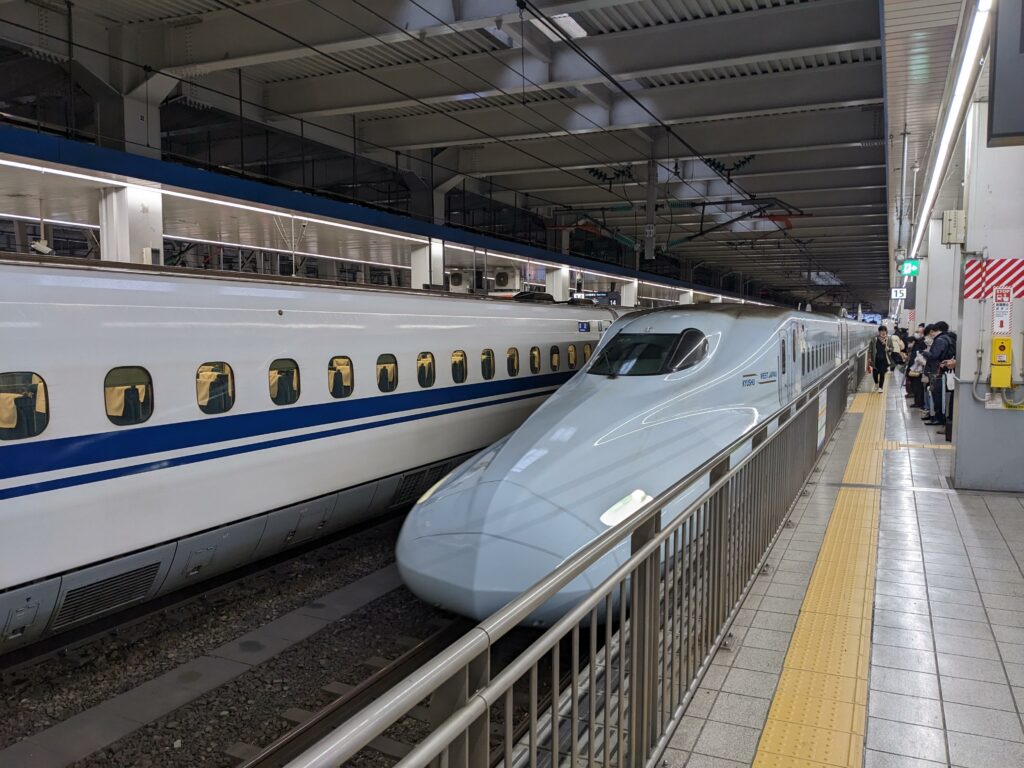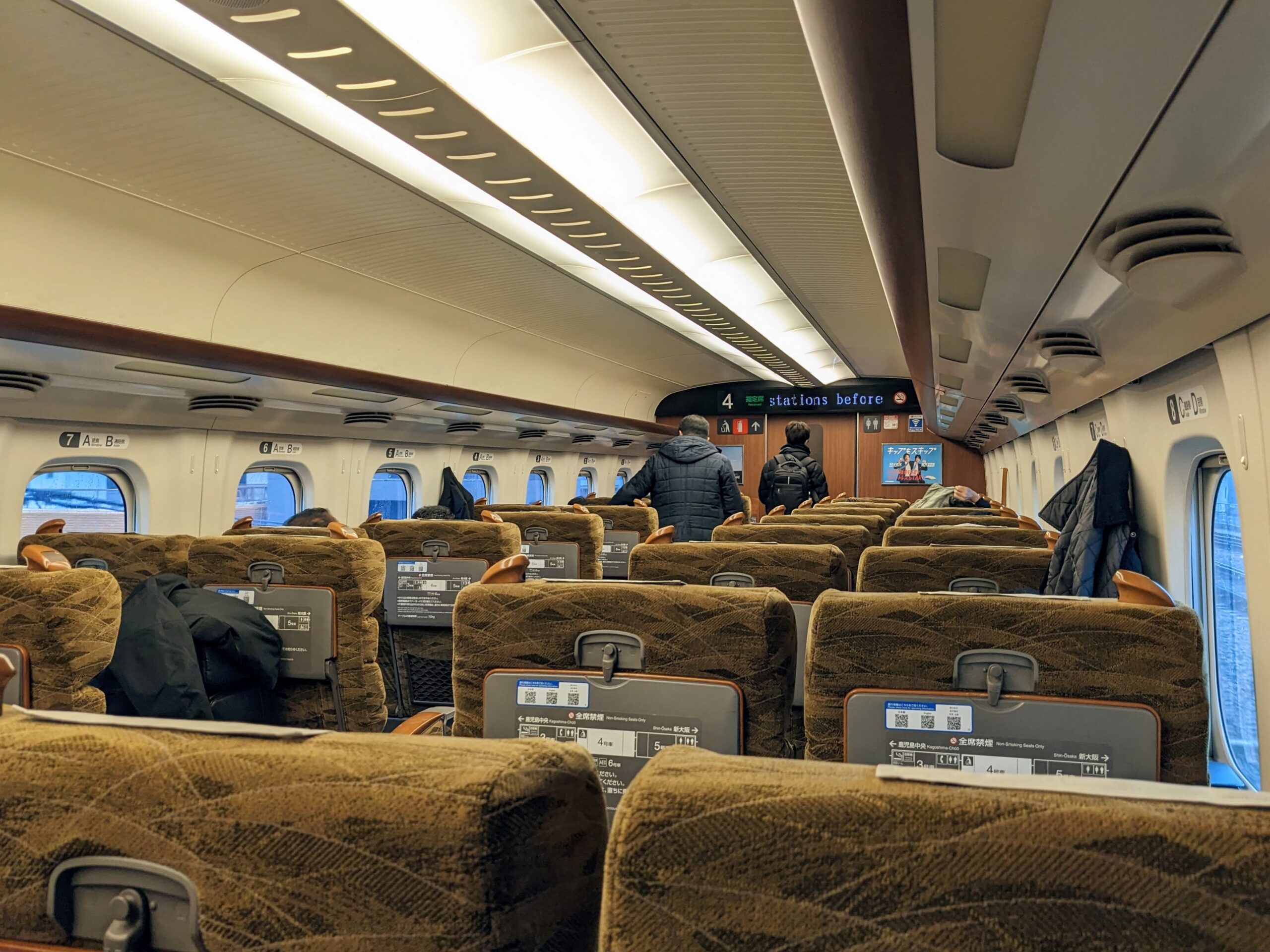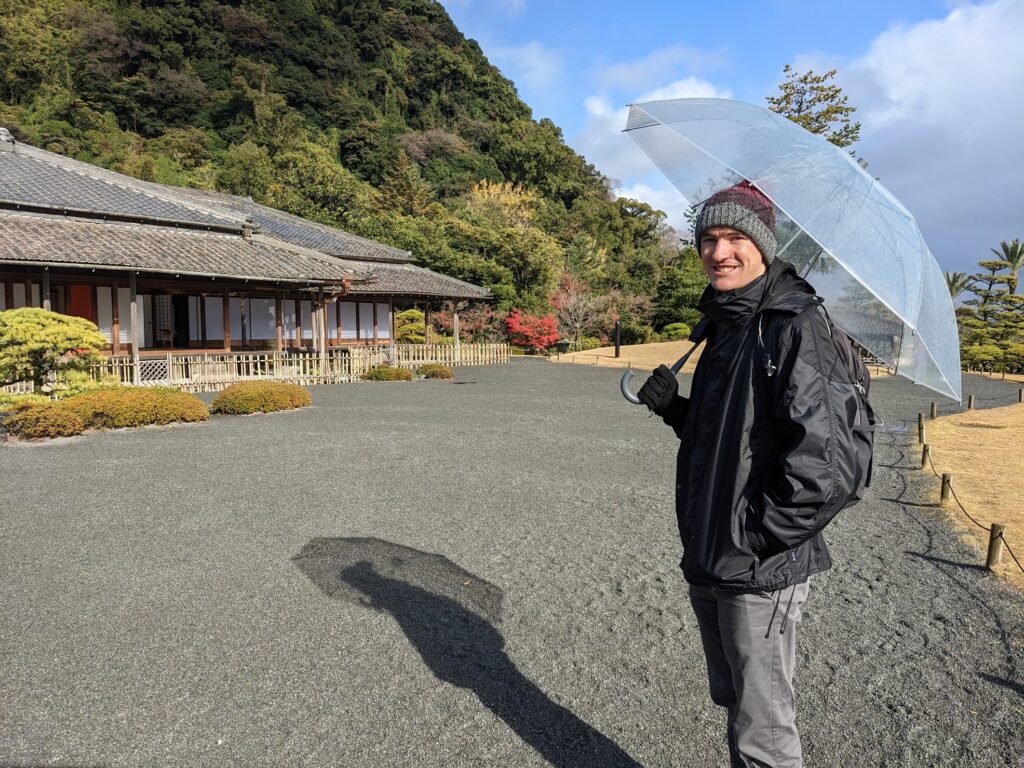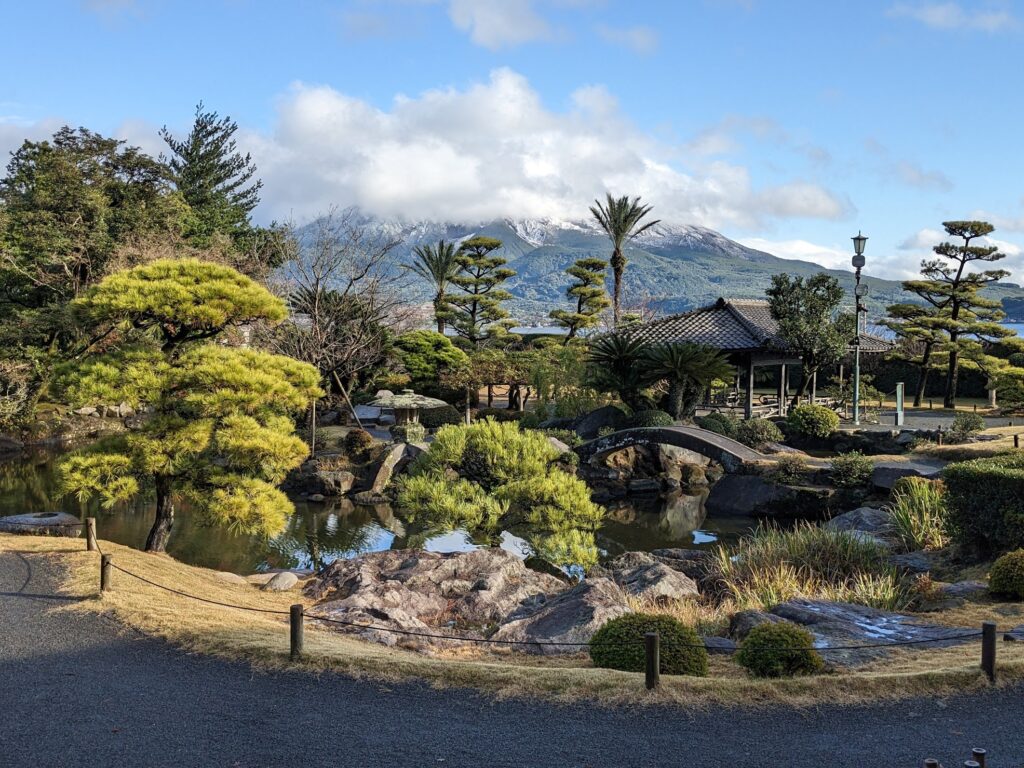The next stop on our Japanese adventure was Kagoshima, a city in Kyushu, the southernmost of Japan’s four largest islands. Kagoshima is best known for its proximity to Sakurajima, an active volcano that sits just a few kilometres from the city’s centre. While we didn’t witness any eruptions during our three night stay, residents of Kagoshima are famous for raising their umbrellas to the falling ash, which is so common it even has its own forecast.
Kagoshima lies at the southern end of Japan’s Shinkansen (bullet train) network. These trains are everything I’d hoped they would be – modern, frequent, comfortable and reliable, but above all else, they look really cool. I was surprised to learn that the Shinkansen trains don’t travel much faster than Eurostar trains, but I think it’s the throughput that’s most impressive. For example, the Tokaido Shinkansen line carries 16 trains per hour in both directions, with each train formed of 16 cars. Even so, our train from Fukuoka to Kagoshima ate up 281 km in just 1 hour and 36 minutes, giving it an average speed of 176 km/hour (including stopping at stations). And this was the “stopping” Sakura service rather than the “limited-stop” Mizuho service, which completes the same route in only 76 minutes!
We managed to time our journey over lunchtime despite the train’s speed and were famished by the time we arrived at Kagoshima’s train station, so we headed straight to the top floor of the Amu Plaza shopping centre where we were confronted with almost too many food options. As often seems to happen, we explored the whole floor before returning to the first restaurant we’d seen, which looked both exciting and crucially had plenty of room for our massive backpacks. While my pork dish was good, it was Sara’s Nanban chicken that stole the show. The dish takes its name from the sauce that coats the fried chicken, which consists of a mixture of rice vinegar, soy sauce, mirin (rice wine) and sugar, and originates from Miyazaki, a city about 100 km from Kagoshima. Upon finishing the last scrap, Sara announced that it was the best fried chicken she’d ever eaten. High praise indeed!

After lunch, we swapped the slick and efficient Shinkansen for the charming but snail-like street-car (tram) of Kagoshima. I’m fairly sure it travelled slower than walking pace over the two kilometres to our apartment, but it was still great fun and most importantly kept us dry from the torrential rain. I particularly liked the change machines found onboard these trams, which spit out a handful of assorted coins in exchange for a note, ensuring that travellers can pay the exact fare on exiting the tram without delay. I say without delay, but the change machine was located next to the driver at the front of the tram, which resulted in a high-pressure coin counting exercise as we exited the busy tram, but we did our best!
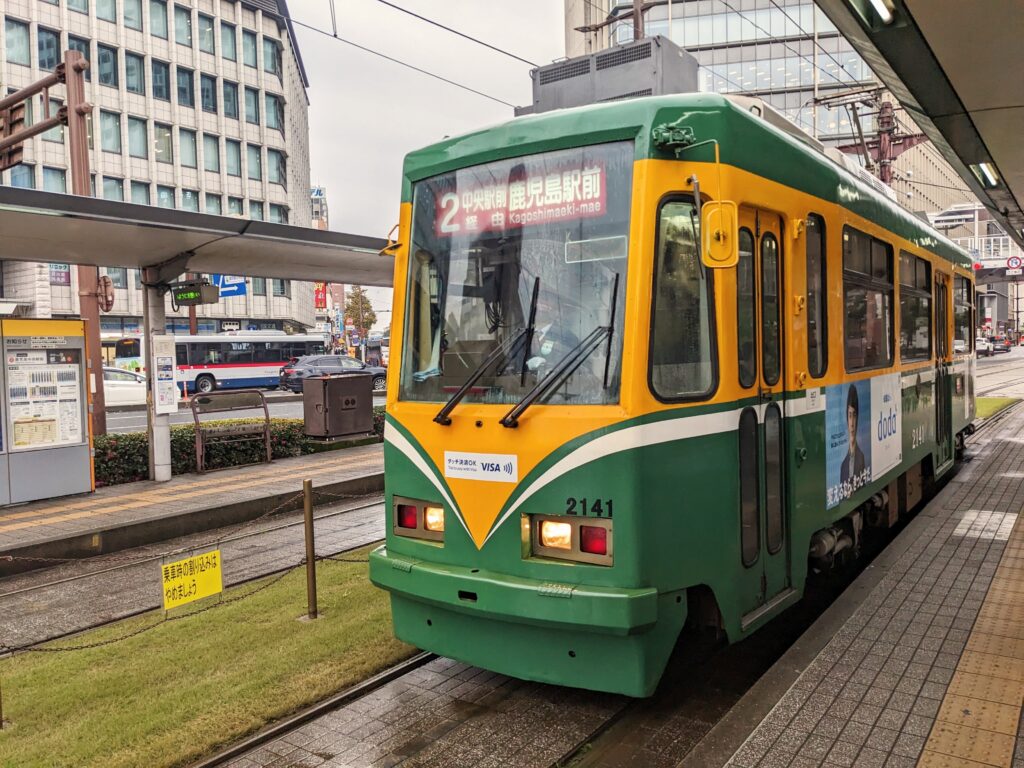
On our first full day, we took an excursion to the coastal town of Ibusuki via an old-school scenic train, complete with a wood-panelled interior and some sideways facing seats. I’m sure the view would have been stunning had the rain not perfectly blended the sky into the sea where the horizon would otherwise have been. Still, we thoroughly enjoyed the journey as we rattled out of Fukuoka and along the coast, and by the time we arrived in Ibusuki the sun was even thinking about coming out.
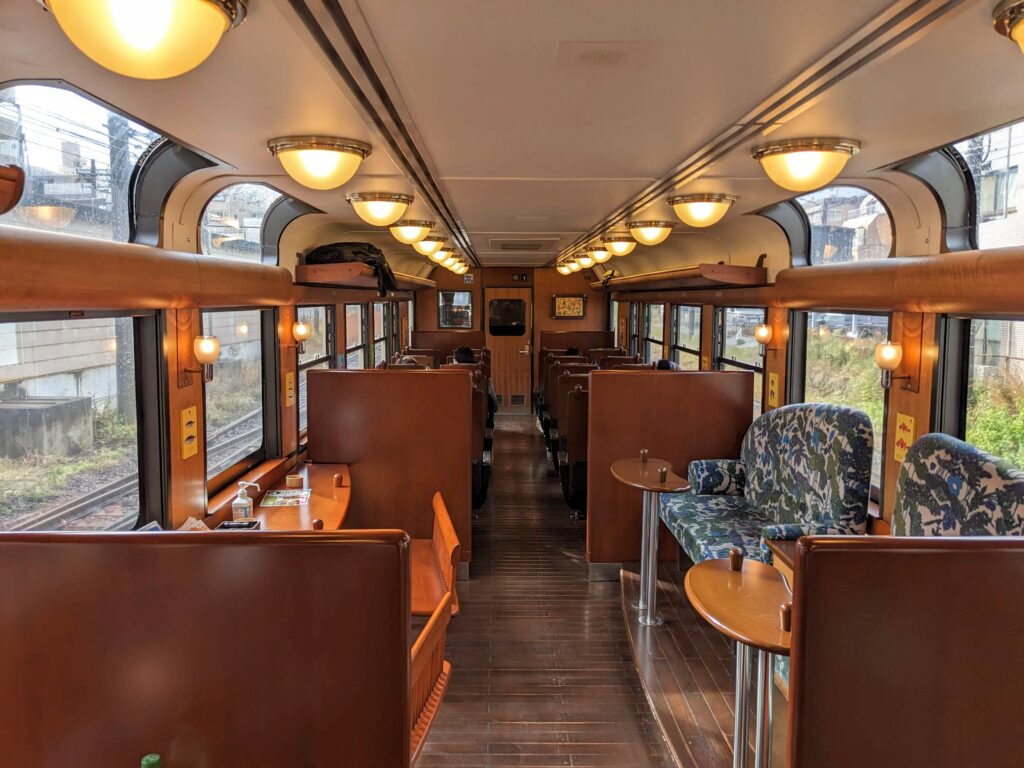
Upon arrival, we couldn’t help but notice how everyone in a position of authority was immaculately dressed. The train drivers were a great example, with their sharp suits, black caps, briefcases and white gloves. I didn’t half feel scruffy in my walking boots and hoody!
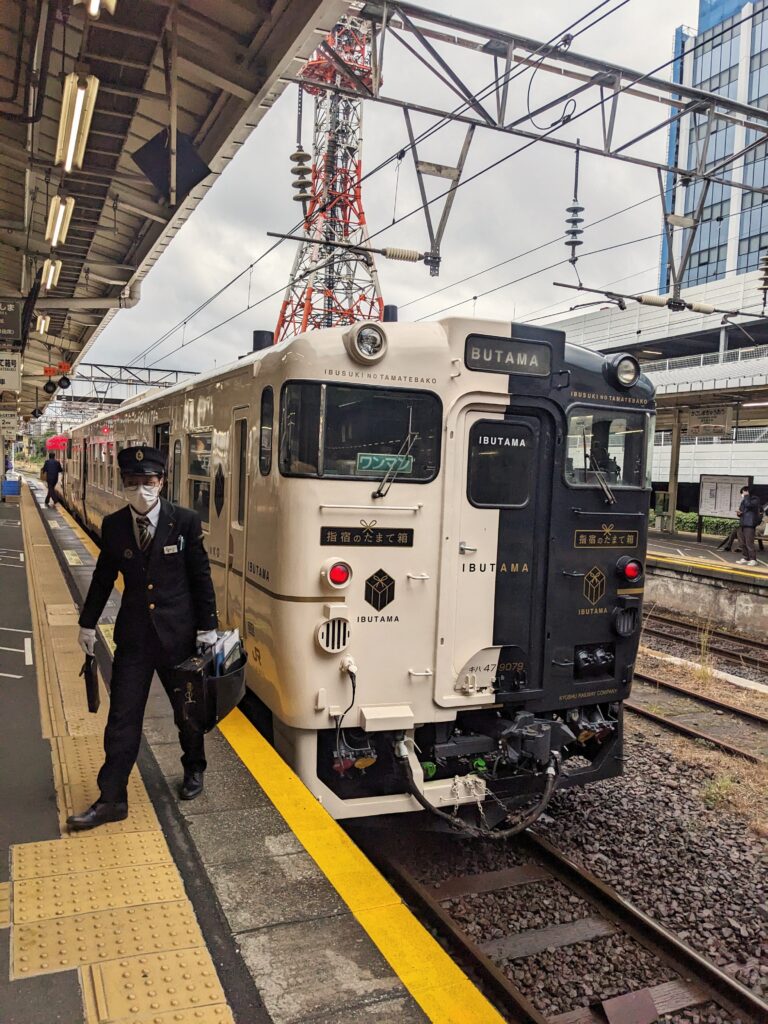
We’d read that Ibusuki is a popular summer holiday destination, but it felt incredibly sleepy in the depths of winter. Many of the shops, cafes and restaurants were shut, and there really weren’t many folks out on the street. We passed through a slowly rusting and largely deserted covered street on our way to the seafront, but the town was otherwise mostly residential.



Finally, we arrived at Ibusuki’s main attraction – its (year-round) hot sand spa. After purchasing our tickets, we were instructed to take off our clothes, put on a yukata (cotton kimono), and head out to the beach. There we laid down in shallow trenches in the sand and were buried by a few of the spa’s employees with the use of shovels. While it was slightly bizarre experience at first, the sand felt soothingly warm and heavy and by the end of our allotted slot neither of us really wanted to get up. While we were weren’t able to take photos of ourselves buried in the sand, Eevee (Ibusuki’s adopted Pokémon mascot) and a nearby photo board give some idea of the set up (at least in the summer) and our attire.


Feeling suitably relaxed, we had just enough time for a leisurely lunch before returning to Kagoshima on the last scenic train of the day. We ended up at Taketoria, a restaurant separated into many rooms containing Horigotatsu (low tables with a recessed area in the floor for your legs). This restaurant specialised in ramen, and Sara again went for the tonkotsu (pork bone broth) ramen while I chose the soy-sauce ramen. Both contained thick slices of black pork (the best pork Sara had ever eaten) and were topped with bonito flakes (incredibly thin slices of simmered, smoked and fermented skipjack tuna) which danced and curled from the steam of the broth. While I don’t think I would ever have chosen to add the bonito flakes by choice, they brought an incredibly satisfying saltiness to the broth, which genuinely made this dish the best ramen I’d ever eaten. Japan’s food scene was yet to disappoint!
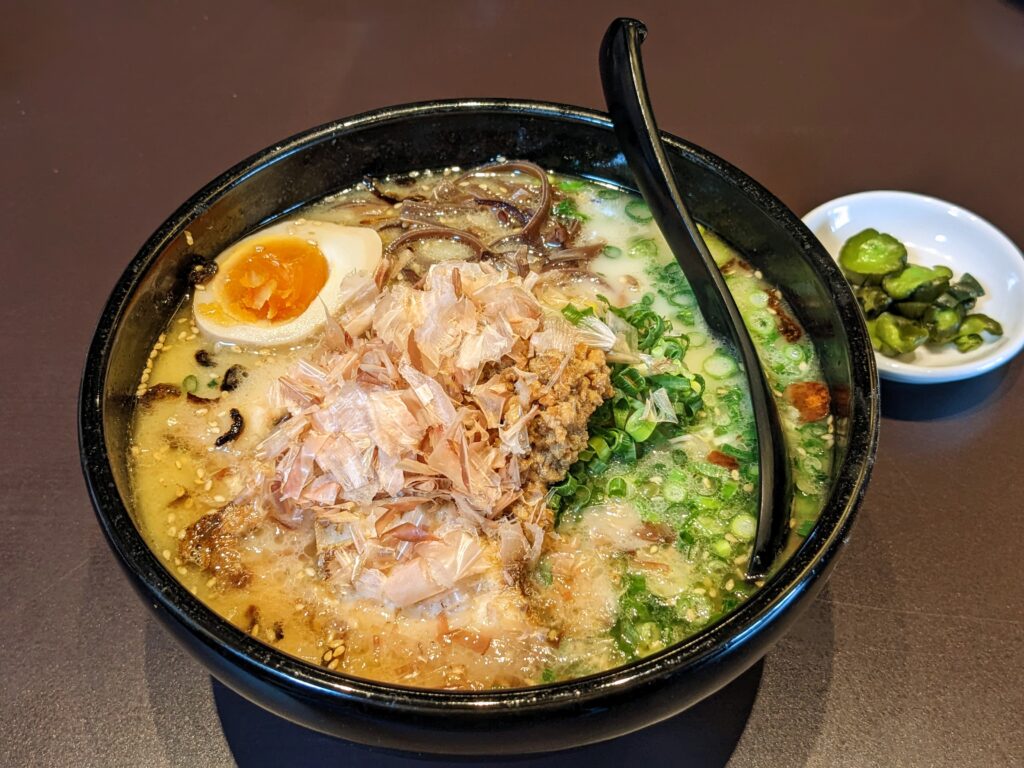
We spent most of our second full day in Kagoshima at Sengan-en, a traditional Japanese garden & former feudal residence. Thank goodness we’d borrowed a couple of umbrellas from our Airbnb, because our walk around the garden was frequently punctuated with heavy showers, most of which seemed to occur while the sun was still out. Still, the gardens were beautifully sculpted and immaculately maintained, and were also designed around the view across to the Sakurajima volcano (a technique we learned was called borrowed scenery).
The garden even incorporated a shrine to the seven cats that were taken by an expeditionary army to Korea in the late 16th century. Apparently, these cats were brought on the trip for their time keeping abilities, since the time of day could be accurately read by looking at the shape of their eyes. I’m not totally convinced how accurate these readings can have been, having seen first hand the effect that a passing bird can have on Thomas’ eyes!


While in the park, we also visited the Shimadzu family’s residence, built in 1658 and renovated and extended many times since. The house is a vast wooden single-story structure of rooms about half a metre above ground level, separated by paper-thin walls and carpeted with tatami mats. The rooms are centred around a miniature garden and pond, which caught the afternoon winter light beautifully.


Over the years, the house has hosted many foreign dignitaries during visits to Japan, including a trip by Edward VIII (then the Prince of Wales) in 1922. According to the information boards, he turned many heads on this visit owing not just to his royalty, but also his good looks and eligible bachelor status!
Our final stop in the park was at a little cafe selling Jambo Mochi, a light snack said to be loved by the samurai of Satsuma. These are rice cakes toasted on bamboo skewers, covered in either sweet soy, miso or kokuto caramel glazes. To our surprise, none of the sauces were particularly sweet and didn’t quite provide the sugary hit we were hoping for, but the cafe did at least provide a lovely and warm respite after walking barefoot around the chilly floors of Shimadzu house!
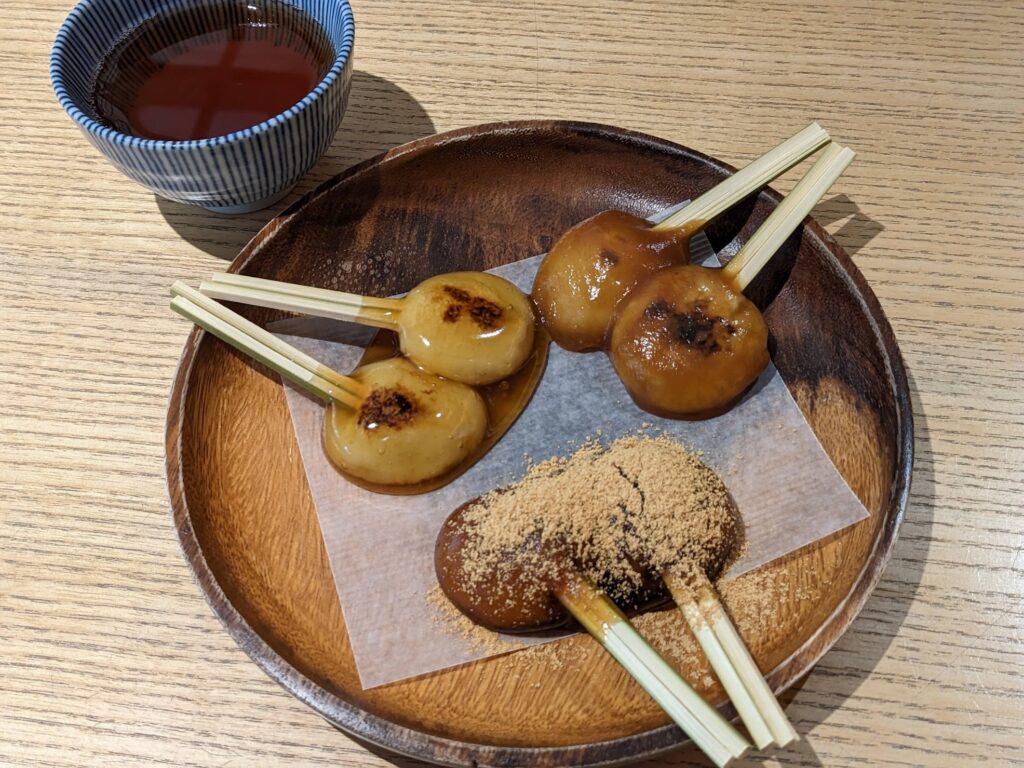
Having enjoyed the quiet charm of Kyushu, it was now time to continue north to Honshu, Japan’s largest island, to visit the bustling cities of Hiroshima, Osaka and Tokyo via yet more bullet trains.
